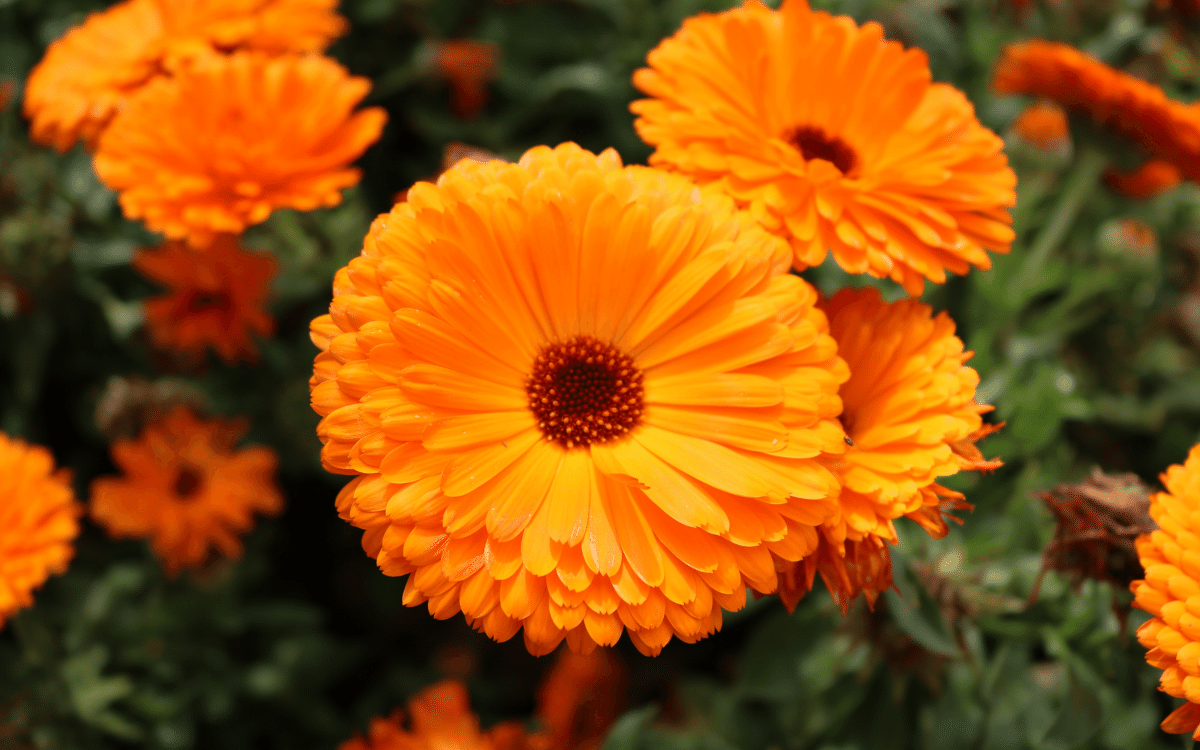Home » What To Sow In May

What To Sow In May
-
 With the risk of frost mostly passed and the weather settling down, many plants can be sown outdoors in the Irish garden. Starting seeds indoors for planting out later in the month is still an option to protect young plants from hungry slugs and snails. With spring plants still blooming and summer flowers beginning to, May is often when gardens look their best! We’ve collected some plants you can try sowing this month.
With the risk of frost mostly passed and the weather settling down, many plants can be sown outdoors in the Irish garden. Starting seeds indoors for planting out later in the month is still an option to protect young plants from hungry slugs and snails. With spring plants still blooming and summer flowers beginning to, May is often when gardens look their best! We’ve collected some plants you can try sowing this month.
Courgette - Cucurbita pepo
Courgettes can be sown outdoors towards the end of the month. They are easy to grow and fruit in abundance from early summer to autumn. If you’re low on garden space, they’re perfectly happy in containers or a grow bag. The seeds are large and easy for little hands to handle. All of these traits make it a great option for planting with kids! Plant seeds one inch deep in a fertile, sunny location. Planting two or three per spot means it’s more likely that at least one will germinate. If all germinate, you’ll have to remove the weaker seedlings. Courgettes spread as they grow and like at least a square metre per plant. Keep courgettes well-watered and supplement them with a liquid fertiliser every two weeks once they start fruiting. Young courgettes are the tastiest! Harvesting frequently encourages more fruit to grow. Courgette flowers are edible too: they can be fried or eaten raw. Courgettes are attractive as well as productive plants, coming in many shapes and colours. Try spherical, yellow Floridor, early-cropping Goldrush, or disease-resistant Zelix.Runner bean - Phaseolus coccineus
Another attractive and productive plant to sow now is the runner bean. They are often grown for ornamental value, with white, red, and dual-colour varieties. Beans are ready to harvest in late summer and should be cooked before eating. They can be sown outdoors now or started indoors in April if you want an earlier crop. They’ll need fertile soil enriched with compost or manure, a sunny location, and a structure to climb up as they grow. Keep plants well-watered, especially if growing in containers. Scarlet Emperor is an old favourite, with a heavy crop and bright red flowers.Kale, Brassica oleracea var. sabellica
A bit of planning now and you can be harvesting veg through the winter, too! Kale is nutritious, low maintenance, and frost-hardy. Scatter seeds outside in damp soil or start them off in pots indoors, covering with 1.5cm compost. Starting plants off indoors means that you can replace old plants immediately after their final harvest. After two weeks, transplant or thin them to their final spacings. Each plant will need about 50cm of space. Be sure to harden off indoor-sown plants first by gradually increasing their time outdoors. After this, Kale won’t need much attention. Once leaves are about hand-size, begin harvesting. Take the oldest leaves first and no more than one-third of the plant at a time. Water, weed and watch out for pests and you’ll be rewarded with fresh leaves during the coldest months of the year.Calendula - Calendula officinalis
Companion plants benefit or protect neighbouring plants. Calendula is one of our favourite companion plants and you’ll often see its bright blooms in our food garden. It attracts beneficial insects and repels harmful pests. On top of that, calendula blossoms are edible and make an attractive garnish. The curled seeds can be sown directly outside this month. Water well until established. Deadheading faded blooms will encourage flower growth. Otherwise, you can let seed heads mature and spread seed where you’d like to see the plants returning next year.Lettuce
Lettuce is easy to grow, with a huge choice of flavours and textures. Sow seed in moist, well-prepared soil or compost this month, leaving 30cm between rows and covering thinly. As they grow, thin seedlings to 10-20cm apart. You can use the edible seedlings as a garnish or in a salad. If a plant is stressed it can react by going to seed (bolting) early. Keeping soil moist and providing shade on hot days helps delay this. After 6-10 weeks you can begin picking leaves. Cut-and-come again varieties will give several harvests over the season. Successional sowing from March to September will give you a steady supply for most of the year. Efforts in the garden now will pay off before too long. Enjoy this active month and you’ll soon be reaping what you sow!




